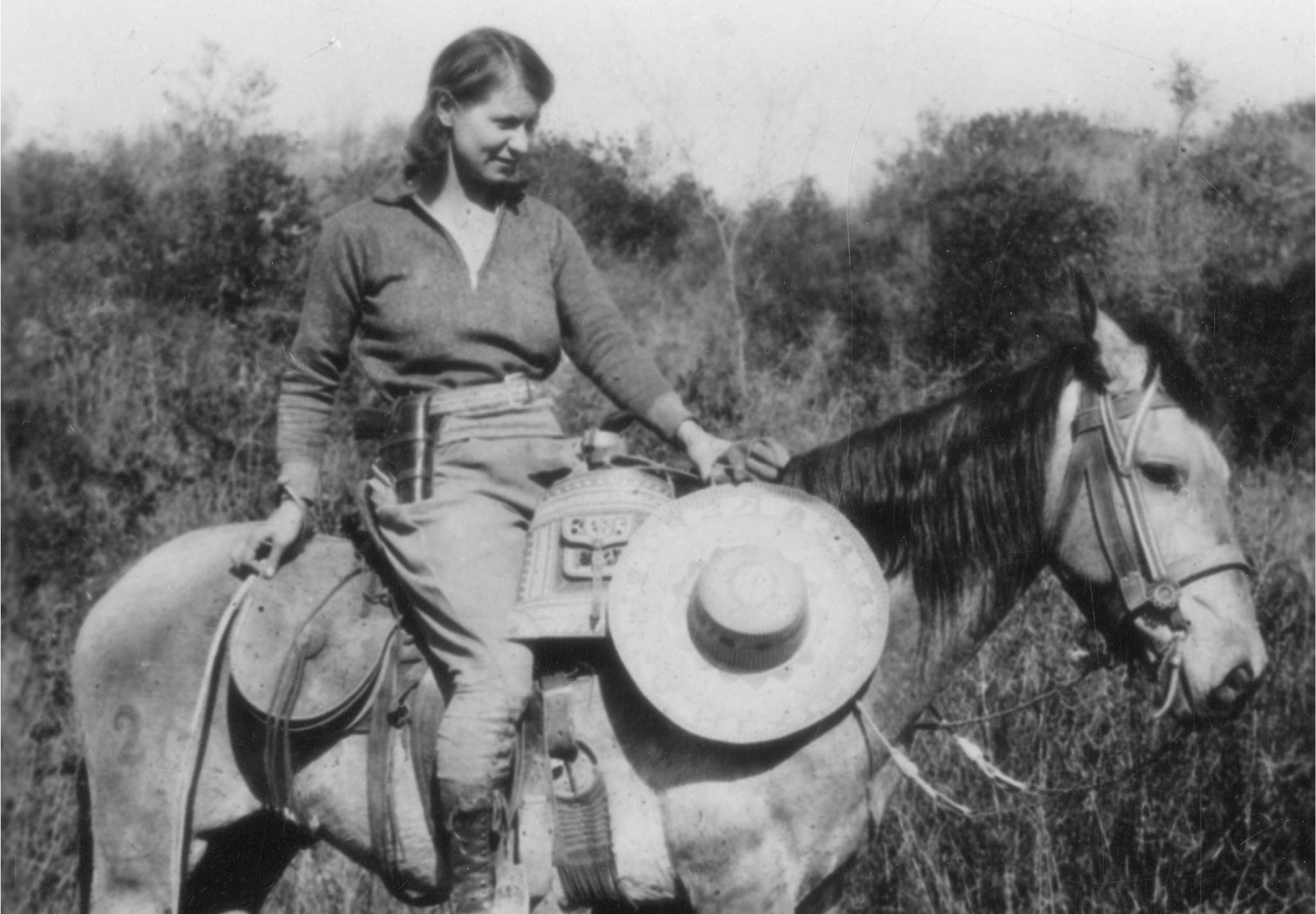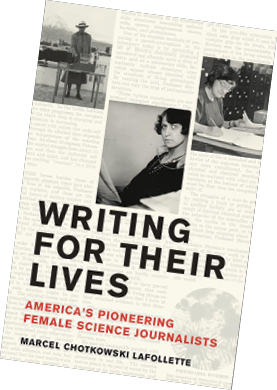Lost voices of science journalism
DOI: 10.1063/PT.3.5382
“Blonde Girl Explorer Mystifies Natives of ‘Forbidden City.’” In eight words, the progressive and the problematic collided in a 1933 Science News Letter headline. The blonde girl in question was science journalist Emma Reh, writing at a time when most journalists were men. She had moved to Mexico to escape a failing marriage. While there, she conducted research in anthropology, immersed herself in Indigenous culture and language, and reported on archaeological research sites in places like Oaxaca and Quintana Roo. But Reh’s article—as its title made clear—centered the reporter and sensationalized the culture she had come to study.

Early Science Service contributor Emma Reh sits atop a horse in Oaxaca, Mexico, where she reported on archaeological excavations.(Courtesy of Smithsonian Institution Archives, Accession 90-105, Science Service Records, Image No. SIA2009-2150.)

In her newest book, Writing for Their Lives: America’s Pioneering Female Science Journalists, Marcel Chotkowski LaFollette has undertaken an ambitious task. She introduces nearly 60 reporters—mostly women, including Reh, but also a small handful of men—who served as some of the earliest science writers in the US. The resulting work spans several decades in quick succession. LaFollette describes a cohort of journalists who wrote about medicine, nutrition, psychology, chemistry, the social sciences, and more. She draws their histories from the records of the Washington, DC–based Science Service, a news service and nonprofit organization created in 1921, known today as the Society for Science.

According to LaFollette, women were the majority of the editorial staff writers for the first 40 years of the organization’s operations. At the time, she says, “no newspaper in the United States employed a woman to write about science.” Most of Science Service’s syndicated content, however, appeared without attribution to individual authors, effectively masking the gender of the contributing writers.
LaFollette counterbalances that erasure by uncovering the identities of 58 women who wrote for the news service during the first half of the 20th century. Summarizing the contributions of so many journalists in a relatively short space, though, means that each individual receives only a few moments of attention. Quick biographical sketches reveal the writers’ travels, genealogies, parents’ employment, and relationships with siblings, in addition to the subjects on which they reported. What the reader hungers for most, perhaps, is more analysis of the perplexing blend of inclusion and inequity that emerges in this history.
The strongest sections of the book are its middle chapters. Here, LaFollette slows down, introducing the reader to Reh, Jane Stafford, and Marjorie Van de Water and the topics that they covered: archaeology, medicine, and psychology, respectively. The intersection between professional and personal motivations, the impact of chronic underpayment, and the profound commitment that contributing writers demonstrated under difficult circumstances begin to come into focus. Reh, for example, sent dispatches to Science Service from Mexico while she waited for her divorce to be finalized, but editors typically declined to pay her an advance. When Science Service fell short of meeting her needs, Reh sent her work to other publishers, including Scientific American and the New York Times, reaching new audiences.
At its heart, Writing for Their Lives is an homage to archivists. Photographs are at once intimate and professional, beautifully evoking the lives and personalities of LaFollette’s subjects at work. An independent historian and a research associate at the Smithsonian Institution Archives, LaFollette draws most heavily from the Smithsonian’s collections, including Science Service employment records and professional correspondence. The result is a cabinet of curiosities, filled with details that other authors might have passed over. In presenting, for example, the managing editor’s personal stationery that highlighted his wife’s chemistry degree, or the cost of travel for a freelancer—$45.93 for a trip to Saint Louis, including “railroad fare and Pullman charge … ‘hotel, meals, tips, taxis … and the pressing of a frock’”—LaFollette invites the reader to explore the records alongside her.
The book unveils early and important, yet incomplete, steps toward including women’s voices in science journalism. Science Service editors made space for women writers but also urged them to revise their copy for greater splash and home-economics appeal, supporting stories that resonated with traditional Western attitudes—like that of the “blonde girl explorer.” The organization’s first director, Edwin Slosson, advised one aspiring contributor to trim her stories by saying, “You put too much meat into your preparations. Remember that a housewife’s skill is based upon her ability to make a tasty dish out of a scrap of leftover.” Unsurprising for the era, but nonetheless disheartening, LaFollette notes only one woman of color who worked for the service during its first five decades. Some staff writers also hinted at the social impact of gender discrepancies in the fields they covered. “The test atomic explosions have been peculiarly man’s work,” wrote Helen Augusta Miles Davis about nuclear tests in Nevada and at Bikini Atoll after World War II. Despite being married to the managing editor at Science Service, Davis often wrote without compensation and without recognition on the masthead.
Writing for Their Lives pulls back the curtain on a complex mix of progress and disparity but often refrains from critique. It celebrates women in science journalism who challenged the early-20th-century social norms that had excluded them. It also reveals, indirectly, the considerable cultural distance between 1933 and 2023. The book is a reminder not only of how far society has come but also of how much road still lies ahead in working toward full equity and inclusion.
More about the Authors
Christopher Reddy is a senior scientist in the department of marine chemistry and geochemistry at Woods Hole Oceanographic Institution in Woods Hole, Massachusetts. He studies the degradation of chemicals and plastics in the ocean and is the author of the 2023 book Science Communication in a Crisis: An Insider’s Guide.
Michelle Frank. Leon Levy Center for Biography.
